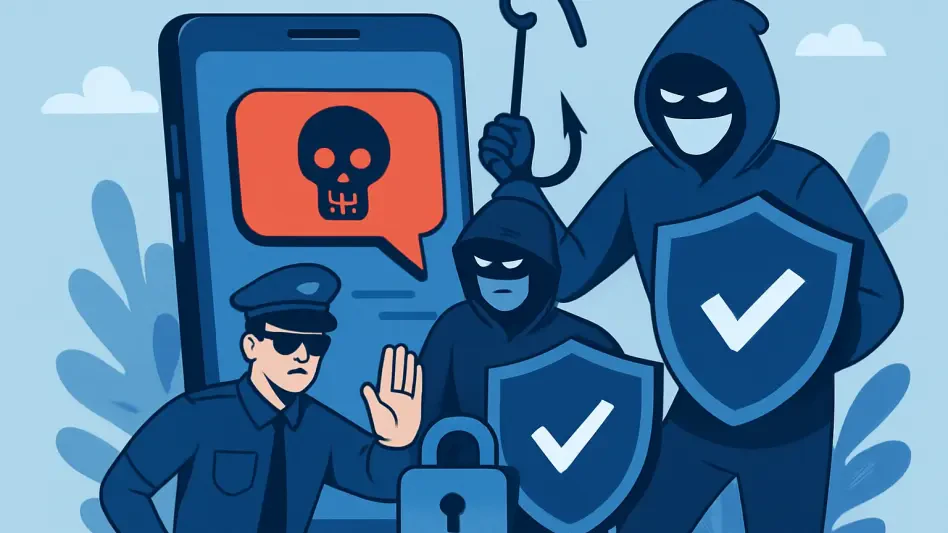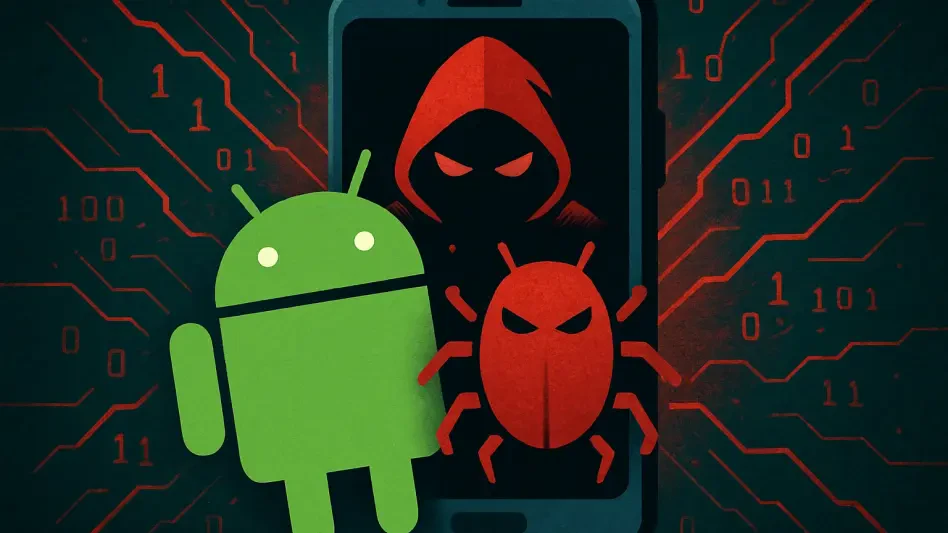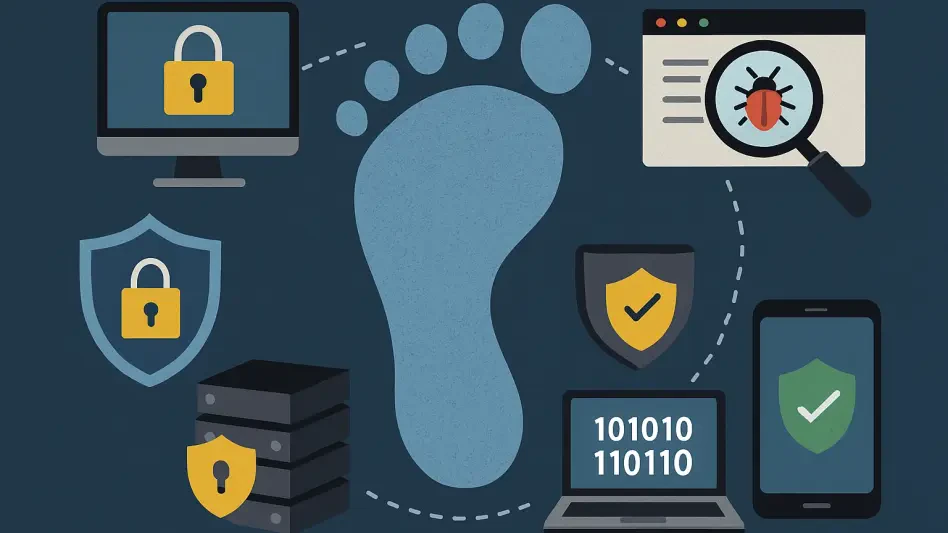Imagine opening your phone to a text message claiming a package is stuck in transit or a bank account needs urgent attention, only to discover later that the personal details you shared have fallen into the hands of cunning scammers. This scenario is becoming alarmingly common through smishing, or SMS phishing, a cyber threat that exploits the trust people place in text messages. At the forefront of this growing crisis is Lighthouse, a sophisticated “phishing-as-a-service” network accused of deceiving millions globally by impersonating trusted brands. Google has taken a decisive stand against this operation with a groundbreaking legal Ascendancy legal approach, aiming to dismantle the infrastructure that fuels these scams. This article delves into the mechanics of Lighthouse’s schemes, the wider impact of smishing, and the innovative strategies being deployed to curb this digital menace, offering a clear view of a battle that affects both individuals and corporations.
Unpacking the Smishing Epidemic
The Surge of Text-Based Scams
Smishing has rapidly emerged as a dominant cyber threat, surpassing traditional email phishing due to the immediacy and inherent trust associated with text messaging. Criminal networks like Lighthouse exploit this by crafting messages that mimic legitimate notifications from delivery services, banks, or tech giants, often with a sense of urgency that prompts quick action. These scams are particularly effective during peak shopping seasons when people expect frequent updates about orders or transactions. The FBI’s Internet Crime Complaint Center has noted smishing as one of the most reported cybercrimes, reflecting its widespread reach. Unlike email, where spam filters have become more robust, SMS remains a relatively unprotected channel, making it a prime target for fraudsters seeking to harvest sensitive information such as passwords or credit card details.
Beyond its prevalence, smishing’s success lies in its psychological manipulation, preying on human impulses to respond to urgent alerts without scrutiny. Lighthouse amplifies this threat by providing scammers with polished, pre-designed templates that impersonate over 400 organizations, creating a veneer of authenticity. This organized approach lowers the barrier for entry-level cybercriminals, enabling even those with minimal technical skills to launch convincing attacks. The result is a flood of deceptive texts that can lead to devastating financial losses or identity theft for unsuspecting recipients. As mobile devices remain central to daily life, the vulnerability of SMS as a communication tool continues to be a critical concern for security experts and regulators alike.
Inside a Cybercrime Powerhouse
Lighthouse operates as a highly structured “phishing-as-a-service” entity, equipping scammers with comprehensive toolkits to execute large-scale fraud. These kits include customizable templates, hosting solutions, and distribution networks that streamline the process of impersonating trusted entities. The operation’s global ecosystem is multi-layered, involving data brokers who compile lists of potential victims, spammers who dispatch millions of fraudulent texts, and criminals who monetize stolen data through bank account drainage or dark web sales. Such a division of labor highlights the industrial scale of modern cybercrime, transforming what was once an individual act into a collaborative, profit-driven enterprise that poses significant challenges to traditional cybersecurity measures.
The sophistication of Lighthouse’s methods further sets it apart, as it employs advanced evasion tactics to stay ahead of detection. Techniques like rotating domains and IP addresses prevent easy blocking, while URL shorteners and login proxies help steal session tokens or intercept one-time passcodes sent via SMS. This ability to undermine even multifactor authentication underscores the evolving nature of digital threats, where attackers continuously adapt to countermeasures. With scams often peaking during high-traffic periods like holidays, the operation capitalizes on plausible scenarios that blend seamlessly into users’ expectations, making it imperative to address not just the technology but also the human factors that enable these deceptions to succeed.
Google’s Fightback Through Legal Innovation
Cutting Off the Digital Lifeline
Google has launched a strategic civil lawsuit in a New York federal court to combat Lighthouse, focusing not on the elusive overseas operators but on the infrastructure that sustains their activities. Recognizing the jurisdictional barriers to direct prosecution, the company targets U.S.-based intermediaries such as domain registrars, hosting providers, and payment processors that inadvertently support the scam network. By securing court injunctions to sever these critical services, Google aims to disrupt Lighthouse’s ability to operate at scale, effectively pulling the plug on their digital backbone. This approach shifts the battle from chasing individuals to dismantling the systems that enable widespread fraud, offering a practical solution to a complex, borderless problem.
This legal maneuver is rooted in a broader understanding of cybercrime economics, where increasing operational costs for scammers can deter their activities. By compelling infrastructure providers to cut ties with Lighthouse, Google seeks to create a ripple effect that hampers the network’s visibility and revenue streams. Evidence gathered from public platforms like Telegram, where Lighthouse markets its services, strengthens the case for court-ordered suspensions of associated accounts. This focus on systemic disruption rather than personal accountability reflects a growing trend in cybersecurity, where legal tools are wielded to address the root enablers of digital crime, providing a blueprint for tackling similar threats in the future.
Building a Blueprint for Future Battles
Beyond addressing Lighthouse specifically, Google’s lawsuit serves as a potential precedent for disrupting other phishing-as-a-service operations. By leveraging legal mechanisms to pressure intermediaries, the company sends a clear message to the cybercrime underworld that infrastructure support will not go unchallenged. This strategy aligns with industry efforts to raise the stakes for illicit actors, making their ventures less profitable and more difficult to sustain. The case also highlights the importance of platform accountability, as public marketing of scam tools on accessible channels provides actionable evidence for legal intervention, pushing for tighter controls across digital ecosystems.
The broader impact of this approach lies in its adaptability to an ever-changing threat landscape, where new networks emerge as quickly as old ones are dismantled. Google’s emphasis on court-backed disruption offers a scalable model that other tech giants and regulators could adopt, fostering a collaborative front against organized cybercrime. Smishing’s status as a top-reported issue to law enforcement agencies like the FBI further justifies such aggressive tactics, as the scale of harm—ranging from personal losses to corporate breaches—demands innovative responses. This legal battle, while not a complete fix, marks a significant step toward reshaping how digital threats are addressed on a systemic level.
Impacts and Protective Measures
Ripple Effects Across Society
Smishing’s consequences extend far beyond individual victims, posing substantial risks to businesses through secondary attacks like account takeovers and business email compromise. When personal mobile devices are breached, attackers can access synced passwords or sensitive data, opening doors to corporate systems or enabling ad fraud. This threat intensifies during high-traffic periods such as holiday shopping seasons, when delivery-themed scams exploit the plausibility of frequent notifications. The Federal Communications Commission has documented a sharp rise in robotext complaints, while smishing remains a leading category in cybercrime reports, signaling a systemic issue that affects consumer trust and enterprise security alike.
The societal toll of these scams also includes eroded confidence in digital communication, as users grow wary of legitimate messages amid a sea of fraud. For enterprises, the downstream effects can be catastrophic, with compromised accounts facilitating unauthorized access to cloud services or financial transactions. This dual impact on personal and professional spheres underscores the urgency of addressing smishing as a top-tier cyber threat. Regulatory bodies and security agencies continue to highlight the need for coordinated action, as the pervasive nature of SMS-based attacks demands solutions that bridge individual caution with institutional safeguards.
Arming Users and Businesses Against Fraud
To counter the smishing wave, practical defenses are essential for both individuals and organizations. Users should adopt a skeptical mindset toward unsolicited texts, especially those urging immediate action or containing links, and verify claims through official channels instead. Switching to non-SMS-based multifactor authentication, such as authenticator apps or hardware keys, significantly reduces the risk of intercepted codes. Reporting spam to carriers also helps build a collective defense by flagging malicious numbers for broader blocking, contributing to a safer messaging environment for all.
Businesses, meanwhile, must prioritize phishing-resistant authentication methods and deploy mobile threat detection tools to protect against SMS-driven breaches. Proactive monitoring for brand impersonation domains, coupled with rapid takedown workflows in partnership with infrastructure providers, can limit the damage of fraudulent campaigns. Employee training that simulates real-world smishing scenarios is equally critical, as human error often serves as the entry point for attackers. By combining technological upgrades with awareness initiatives, companies can fortify their defenses against a threat that exploits both digital and behavioral vulnerabilities.
The Shifting Landscape of Cyber Threats
SMS as the New Frontier for Scammers
The migration of phishing from email to SMS marks a pivotal shift in cybercrime tactics, driven by strengthened email security and the unique trust users place in text messages. Lighthouse exemplifies this trend by leveraging the immediacy of SMS to deliver convincing lures that bypass traditional filters. As email defenses have hardened over time, attackers have turned to less guarded channels, exploiting the assumption that texts are inherently safe or personal. This pivot reflects a broader adaptation within the criminal underworld, where the path of least resistance dictates the choice of attack vector, posing fresh challenges for cybersecurity professionals.
The rise of SMS as a preferred method also ties into the psychological edge it offers scammers, with short, urgent messages prompting quicker, less cautious responses compared to emails. Regulatory bodies and security agencies have noted a corresponding surge in smishing incidents, reinforcing the need for updated defenses tailored to mobile platforms. Lighthouse’s success in this arena highlights how cybercriminals continuously scout for gaps in user behavior and technology, necessitating a dynamic response that evolves as rapidly as the threats themselves.
The Industrialization of Digital Fraud
Lighthouse embodies the disturbing trend of cybercrime-as-a-service, where ready-made tools and infrastructure lower the entry barriers for aspiring fraudsters. This plug-and-play model transforms smishing into an accessible, scalable business, allowing even novices to launch sophisticated attacks with minimal effort. Such industrialization democratizes digital crime, amplifying its reach and impact across global populations, while organized networks profit from selling services rather than executing scams directly. This shift underscores a critical challenge for defenders, as the sheer volume of participants complicates efforts to stem the tide.
Addressing this trend requires a multi-pronged approach that combines legal action, technological innovation, and public education. Google’s focus on disrupting service providers aligns with the need to target the supply chain of cybercrime, while user awareness campaigns can reduce the effectiveness of mass-distributed scams. As “as-a-service” models continue to proliferate, collaboration between tech companies, regulators, and law enforcement becomes indispensable. The battle against entities like Lighthouse reveals a persistent need for adaptive strategies that not only react to current threats but also anticipate the next evolution in criminal tactics.








